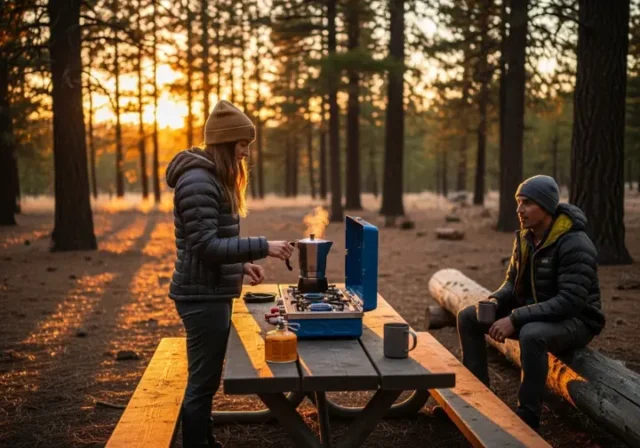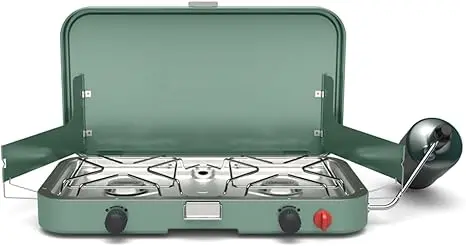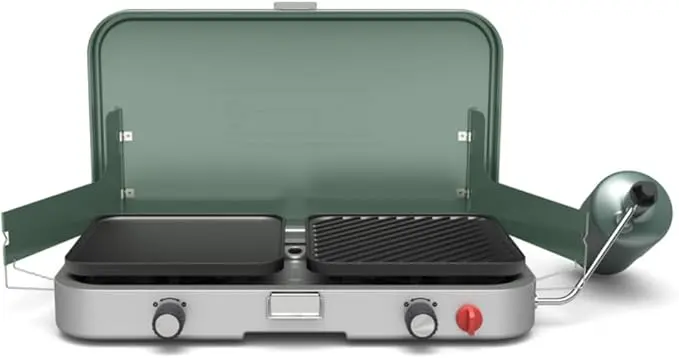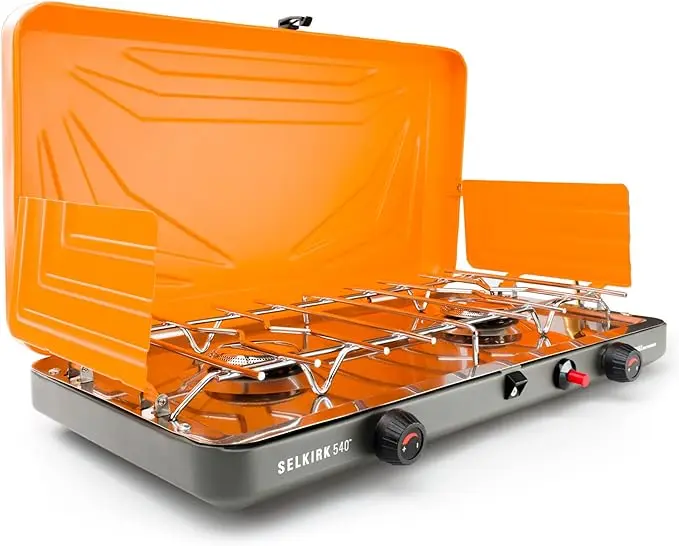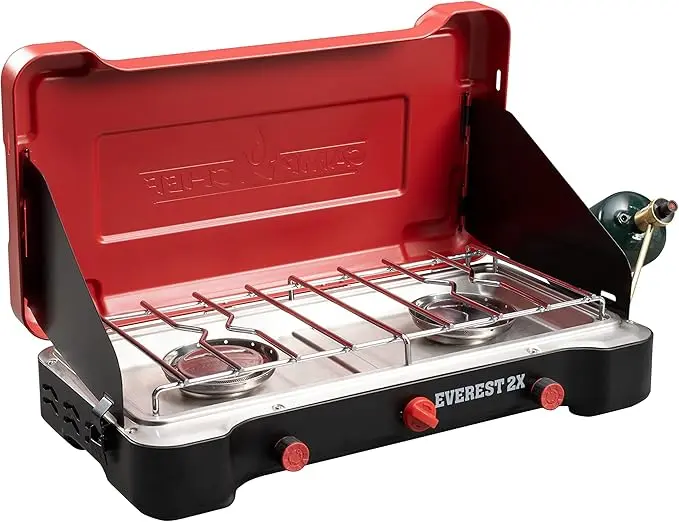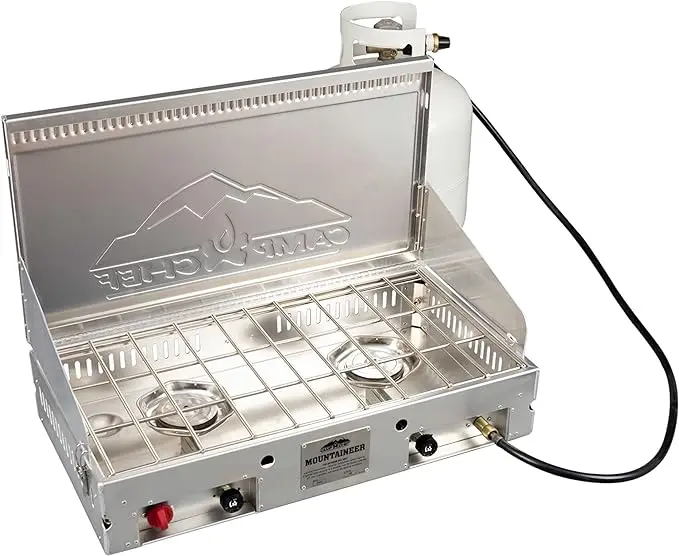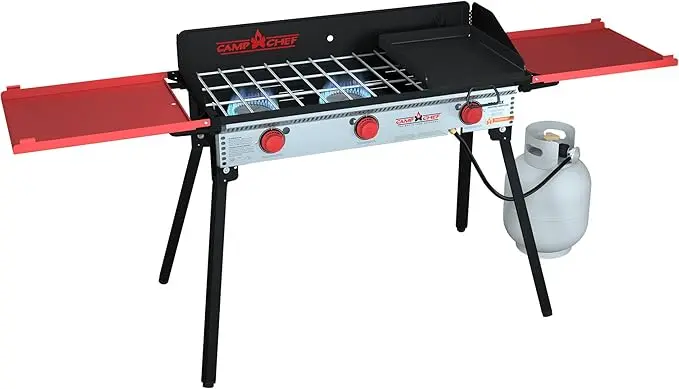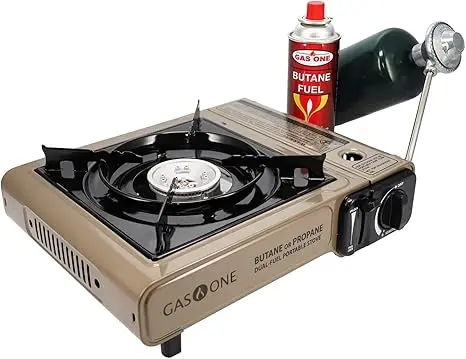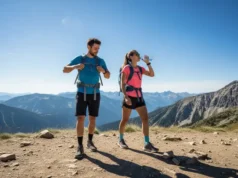In this article
The hiss of propane and the first scent of morning coffee—the camp stove is the true heart of the modern campsite. It’s the engine of our adventures, the tool that transforms a simple collection of ingredients into a memorable camp feast under the stars. But navigating a market flooded with claims of “extreme power” and “sleek design” can leave even seasoned campers confused. This guide to the best camping stoves cuts through the noise, revealing that the ideal camp stove isn’t the one with the highest BTU output, but the one that masters the real-world challenges of wind, delicate simmering, and campsite reliability. We’re moving from “Spec Sheet Confusion” to “Campsite Culinary Confidence.”
This isn’t just another list. It’s a field-tested propane stove selection & efficiency guide built on years of outdoor education and countless meals cooked in less-than-ideal conditions. Here’s what you’ll learn:
- The BTU Myth: We’ll debunk the marketing hype and show you why a well-designed camping stove with 12,000 BTUs can easily outperform a poorly designed 20,000 BTU model, especially considering factors like fuel efficiency and cold weather performance.
- The Simmering Paradox: Discover the single most important feature for real outdoor cooking—the simmer control capability that spec sheets never reveal and many stoves fail to deliver.
- Field-Tested Winners: See our top picks for every camper, from the weekend warrior to the gourmet base-camper, based on extensive side-by-side testing of top propane stoves.
- Your Perfect Match: We provide a simple framework to help you confidently choose the right propane cooker for camping, ensuring it becomes a trusted partner for years to come.
How to Choose the Right Propane Camp Stove: An Expert’s Framework
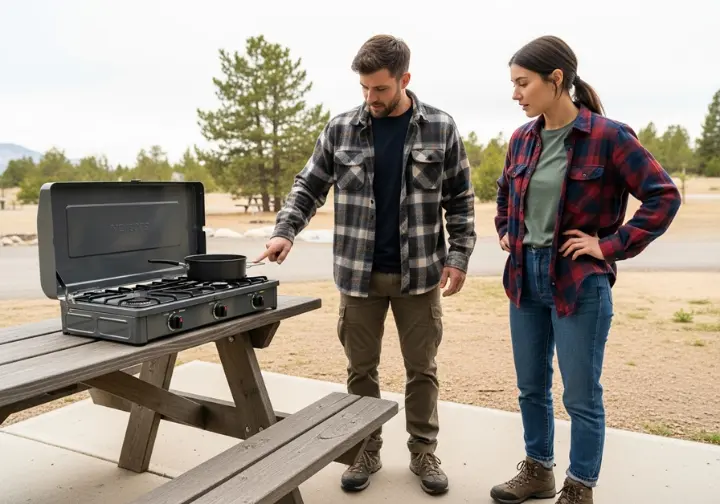
Choosing a stove shouldn’t feel like deciphering an engineering diagram. The goal is to arm you with the objective knowledge needed to make a smart, confident choice. By decoding the key stove features that define a great stove’s real-world cooking performance, you can ignore the marketing noise and focus on what truly helps you cook a great meal outdoors.
Why is Power (BTUs & Boil Time) a Double-Edged Sword?

The first number every manufacturer throws at you is the BTU rating. A British Thermal Unit (BTU) is simply a measure of maximum heat output, which also correlates directly to maximum fuel consumption. It’s the stove’s horsepower, but it tells you nothing about its handling. This is the heart of the “BTU Myth.” A stove’s design—specifically the distance from the burner to the cooking grate and the effectiveness of its wind resistance features—is far more important than its raw power rating.
The true benchmark of effective power transfer is Boil Time, the time it takes to boil one liter of water. A high-BTU stove like the Camp Chef Everest 2X is a beast, but in windy conditions, its raw power can be wasted if the flame is dancing everywhere. In contrast, a more moderately powered stove like the Coleman Cascade Classic, with its decent wind guards, can sometimes achieve a similar or even better boil time per liter by efficiently focusing its heat on the pot. Raw power is useless for anything more complex than boiling water. The real test of a stove’s versatility is its finesse.
Why is Simmer Control the Mark of a True Camp Kitchen?
Here’s the most important lesson I’ve learned from cooking thousands of meals outdoors: simmer control is the ability to maintain a low, stable flame for delicate cooking, and it’s the feature that separates a true culinary tool from a simple water heater. This brings us to the “Simmering Paradox”: many stoves claim to have adjustable burners, but in reality, their control knobs only offer “high” and “less-high,” sputtering out entirely at the lowest setting. A true, low flame for simmering is impossible.
This critical feature comes down to the quality of the regulator valve and the burner design. Premium stoves like the Primus Kinjia or the Camp Chef Everest 2X use superior components that allow for a huge range of heat settings, from a raging inferno to a tiny, stable flame that can cook rice without scorching or keep a sauce warm without boiling over. If you have any intention of crafting easy, high-energy camping meals beyond just boiling water for freeze-dried meals, excellent simmer control is non-negotiable. Even with perfect flame control, your stove is useless if the wind keeps blowing it out.
How Does Stove Design Beat the Elements?
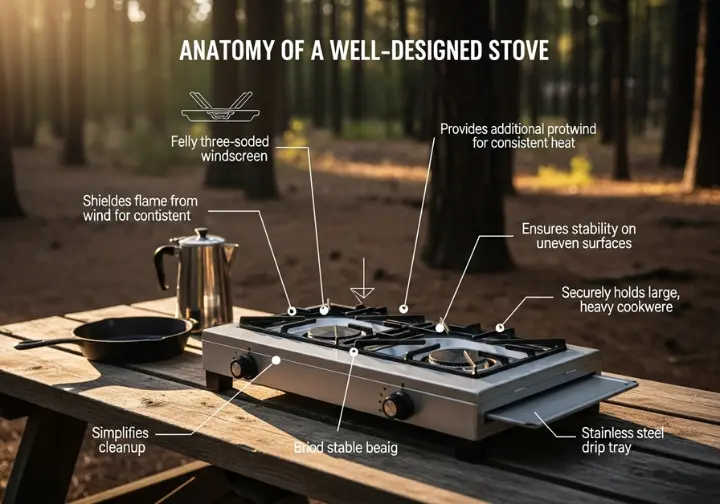
Wind resistance is the ultimate real-world performance test. A stove with poor wind protection will bleed heat into the atmosphere, wasting precious fuel from your propane canister and dramatically increasing your cook times. The most effective stove designs incorporate tall, three-sided windscreens that lock securely into place, combined with recessed burners that are shielded by the stove body. This architecture creates a pocket of calm air where the flames can burn efficiently, regardless of the gusts outside.
Beyond wind, stability is a critical safety feature. A stove must have a wide, stable footprint and robust pot supports to prevent a large, heavy pot of boiling water from tipping over—a disaster at any campsite. Finally, consider ease of use. Features like a push-button piezo auto-ignition system are wonderfully convenient but are also a common point of failure, so always have a backup lighter. Intuitive setup difficulty and removable drip trays for easy cleaning are small details that make a huge difference in the overall experience. Finally, safety isn’t just a feature; it’s a non-negotiable practice. A good stove is an integral part of your complete cook system, which the U.S. Forest Service considers a key component of being prepared outdoors, and it’s just one of the foundational Ten Essentials systems every outdoor enthusiast must master.
Pro-Tip: Always pack a simple, foldable aluminum windscreen, even if your stove has built-in guards. On truly blustery days, this extra layer of protection can make the difference between eating a hot meal in 15 minutes or 45, and it dramatically improves your fuel efficiency.
Our Selection Process: How We Built This Guide
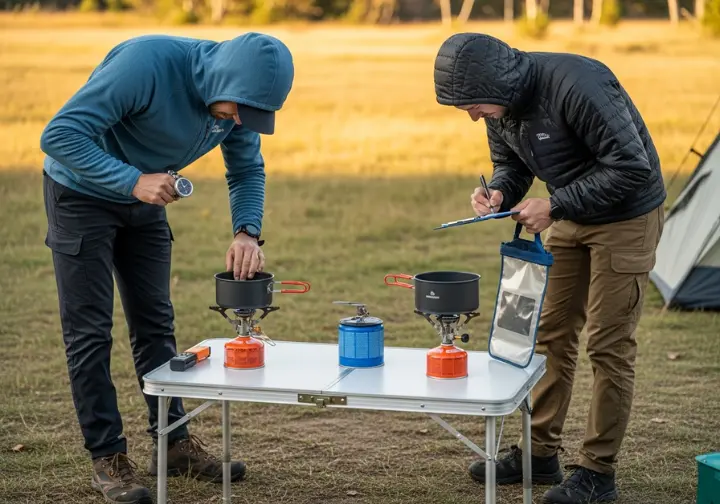
Building this guide was a process of rigorous curation, not simple compilation. We are committed to objectivity. This means we don’t just summarize spec sheets from manufacturer websites; we synthesize performance data from dozens of hours of independent, hands-on field tests conducted by trusted, impartial sources across the outdoor industry. We look for patterns in stove performance, reliability, and long-term durability that only emerge after a propane burner stove has been used and abused in real-world conditions.
Every stove recommended here was judged against the critical real-world attributes we just explained. We created an evaluation framework that prioritized Simmer Control, Wind Resistance, Power (as measured by Boil Time), Portability, and Overall Value. We graded each stove not on its promises, but on its proven ability to deliver when it’s cold, windy, and you’re hungry.
We started with a market-wide analysis of over 30 popular models currently available. We then filtered that extensive list down to the 12 top contenders. This final selection was based on a synthesis of hard performance data, aggregated customer reviews, and expert consensus from fellow outdoor educators and guides. Our goal was to ensure we had a best-in-class option for every major camping style, from the family on a weekend trip to the overlander on a month-long expedition.
A quick note on affiliate links: If you find this guide helpful and choose to buy a stove through our links, we may earn a small commission at no extra cost to you. This support is what fuels our independent research and allows us to keep our content free and unbiased. We only recommend gear we genuinely believe in.
The Best Propane Camp Stoves of 2025: Our Top Recommendations for Every Need
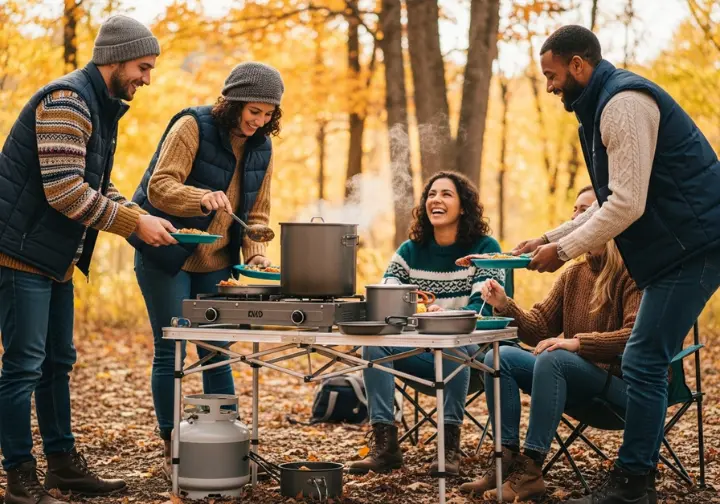
Our Top Picks for The Weekend Warrior (Family of 2-4)
This camper is the backbone of the outdoors community. They need kitchen gear that is reliable, easy to use, and offers fantastic value. It doesn’t need to be the lightest or the most powerful, but a camping stove with gas absolutely must work every time, making camp cooking a joy, not a chore, for a family of two to four. A durable two-burner camping stove with good build quality is a must for any car camping trip.
Our Top Picks for The Gourmet Camp Chef / Overlander
For this user, cooking isn’t just a necessity; it’s a central part of the outdoor experience. They demand precision, power, and durability. Whether they’re set up in a sophisticated van-life kitchen or an overlanding rig deep in the backcountry, their portable cooking system must perform flawlessly and withstand the rigors of constant travel and use. A portable design and excellent cooking surface area are key attributes for these discerning camp chefs.
Our Top Picks for The Group Leader / Base-camper
This is about volume and versatility. The group leader or base-camper is responsible for feeding a crowd of hungry campers. They need a cooking system that can handle multiple large pots and pans at once, offering immense power and a large, stable cooking surface. Portability takes a backseat to pure group cooking capacity and the ability to function as a complete outdoor kitchen.
Pro-Tip: For large, freestanding stoves like these, invest in the rolling carry bag offered by the manufacturer. At 50+ pounds, these stoves are unwieldy, and a dedicated bag with wheels and sturdy handles makes transport from the vehicle to the campsite infinitely easier and protects your investment.
Conclusion
The journey from a confusing spec sheet to a confident purchase is about shifting your perspective. The best portable camping stove propane isn’t found by chasing the highest number, but by understanding the nuances of design and how they translate to real-world cooking.
Remember these core principles: Performance is a function of design, not just power. A stove’s true value is measured by its wind resistance and burner efficiency, not just its BTU rating. Simmer control is the gourmet gateway; the ability to hold a low, steady flame is the single feature that elevates a basic heater to a true culinary tool. Most importantly, there is no single “best” stove. The ideal choice is a direct match for your group size, cooking style, and portability needs. By investing in a fuel-efficient stove, you not only ensure better meals but also save money and reduce the environmental waste of single-use canisters over its lifetime.
Now that you’re armed with the knowledge to decode the specs and features, use our recommendations to confidently choose the perfect heart for your camp kitchen and fuel years of delicious outdoor adventures.
Frequently Asked Questions about Propane Camp Stoves
What is a good BTU for a camping stove?
For most car campers, a stove with 10,000 to 12,000 BTUs per burner offers an excellent balance of solid cooking power and reasonable fuel efficiency for typical meals. However, if you frequently need to boil large pots of water for groups, cook in very cold weather, or simply want maximum power, a high-performance model like the Camp Chef Everest 2X with 20,000 BTUs per burner is an outstanding choice that will significantly speed up your cooking times.
Do I really need a stove with a built-in piezo igniter?
While a push-button piezo igniter is a fantastic convenience, they are notoriously one of the most common points of failure on a camp stove, especially after exposure to moisture and grit. You should never rely on it as your only ignition source. Whether your stove, like the GSI Outdoors Selkirk 540+, has an auto-ignition button or not, you should always carry a reliable backup like a simple BIC lighter or a small box of waterproof matches.
Can I use a large, refillable propane tank with a tabletop stove?
Absolutely. Most tabletop stoves designed for 1 lb disposable canisters can be easily connected to a larger 5, 10, or 20 lb refillable propane tank using a simple adapter hose. This is highly recommended for anyone who camps frequently. It dramatically cuts your long-term fuel costs, reduces the hassle of juggling multiple small canisters, and is significantly better for the environment by eliminating the waste of single-use bottles.
Which camping stove boils water the fastest?
Based on pure power, the freestanding Camp Chef Pro 16 is in a class of its own, with massive 30,000 BTU burners that can bring large volumes of water to a boil with incredible speed. For a more portable tabletop model, the Camp Chef Everest 2X consistently ranks as one of the fastest boilers available. Its powerful 20,000 BTU burners and effective windscreen make it the ideal choice for campers who prioritize raw power and speed above all else.
Risk Disclaimer: Hiking, trekking, backpacking, and all related outdoor activities involve inherent risks which may result in serious injury, illness, or death. The information provided on The Hiking Tribe is for educational and informational purposes only. While we strive for accuracy, information on trails, gear, techniques, and safety is not a substitute for your own best judgment and thorough preparation. Trail conditions, weather, and other environmental factors change rapidly and may differ from what is described on this site. Always check with official sources like park services for the most current alerts and conditions. Never undertake a hike beyond your abilities and always be prepared for the unexpected. By using this website, you agree that you are solely responsible for your own safety. Any reliance you place on our content is strictly at your own risk, and you assume all liability for your actions and decisions in the outdoors. The Hiking Tribe and its authors will not be held liable for any injury, damage, or loss sustained in connection with the use of the information herein.
Affiliate Disclosure: We are a participant in the Amazon Services LLC Associates Program, an affiliate advertising program designed to provide a means for us to earn advertising fees by advertising and linking to Amazon.com. As an Amazon Associate, we earn from qualifying purchases. We also participate in other affiliate programs and may receive a commission on products purchased through our links, at no extra cost to you. Additional terms are found in the terms of service.



